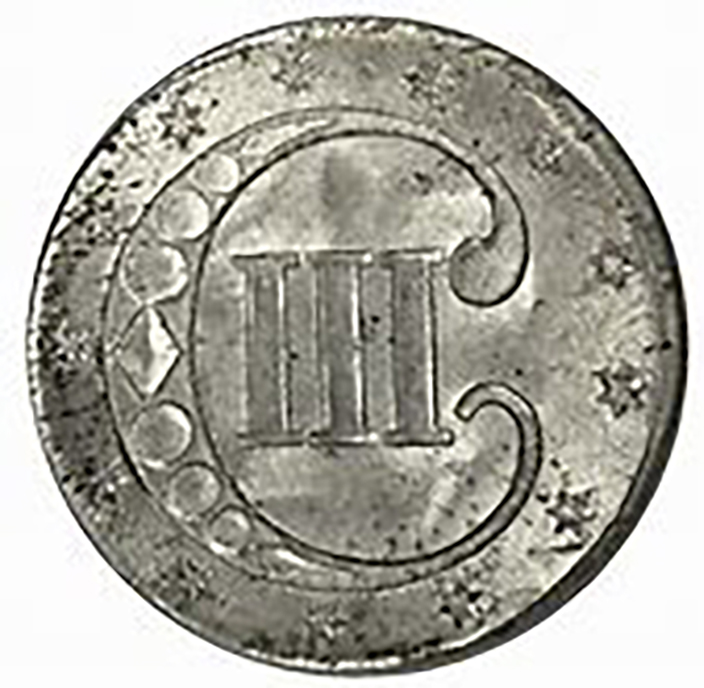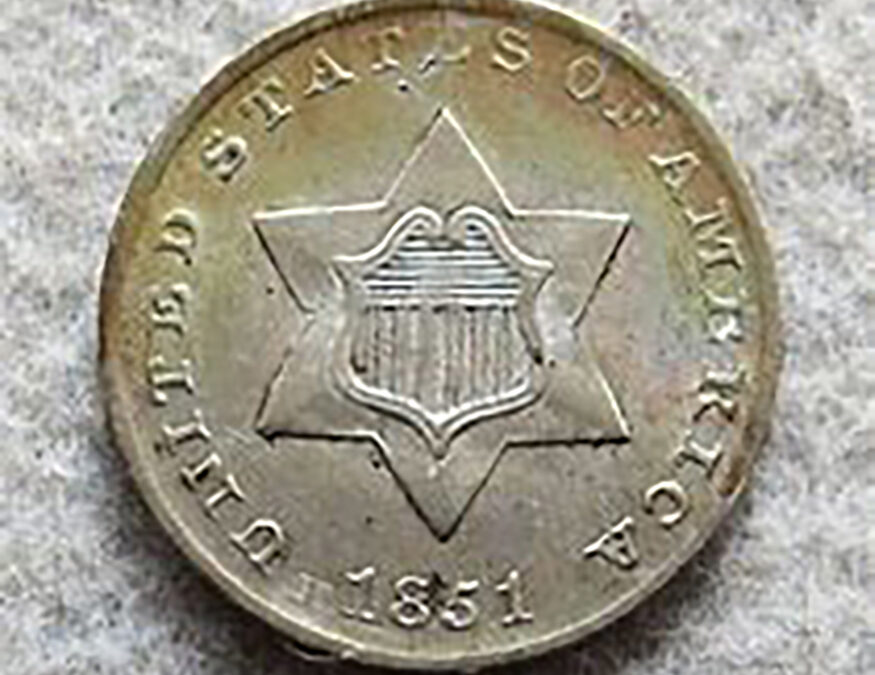The late 1840s and early 1850s saw problems developing in our system of coinage, which had been created under the premise that a coin had its value in the metal it contained. That is, a silver dollar coin contained one dollars’ worth of silver and a five-dollar gold piece contained five dollars worth of gold. This worked reasonably well until the value of the metals changed. That occurred with the discovery of gold in California, resulting in gold being cheaper and silver more expensive.
With the value of silver rising, the value of the silver in the coins exceeded the face value of the coin. (Sound familiar?) This resulted in bullion dealers buying up quantities of coins and shipping them off for melting, resulting in a shortage of coins in circulation. By law, our silver coins were 90% silver, so the only way to lower the value was to lessen the amount of silver in the coins, which was done in 1853 by reducing the amount of silver in the coins just enough to stop the melting of our coins.


Another problem with our coins was the fact our lowly one-cent coin, struck in 100% copper and about the size of a quarter, was worth more than one-cent. That wasn’t remedied until 1857 when the one-cent coin was reduced in size to approximately what it is today and the copper it contained was mixed with the metal nickel.
During all this turmoil, someone in government thought it would be a good idea to strike a three-cent coin, as the postage rate had just been reduced to three -cents and this might help reduce the need for one-cent coins. This idea was kicked around for several years, but finally in 1851 the first three-cent coins made of silver, were released into circulation. These coins contained only 75% silver to discourage melting, but as such the amount of silver they did contain resulted in the creation of a very small coin, the second smallest official coin ever struck by the U.S. mint, second only to the one-dollar gold piece.
The first coins struck in 1851 were minted by both the Philadelphia and New Orleans mints, the New Orleans coins having a large “O” in their design. From 1852 on, only the Philadelphia mint struck three-cent silver coins. Mintage figures dropped dramatically in 1863, at the height of the Civil War as all coinage was being hoarded. Production never increased because a three-cent coin made of the metal nickel was introduced in 1865, being approximately the size of a dime. The last year a three-cent silver coin was struck was 1873, and that was in proof condition only, for collectors.
Because of its size and thinness, it was not too affectionally referred to as a “fish scale”. It was easily damaged and lost, making it unpopular, hence the ultimate change to the larger three-cent nickel coins. Although they may not have been popular, many three-cent silver coins that we purchase are heavily worn or damaged, exhibiting signs of heavy use.
Douglas Keefe and his wife Linda are owners of Beachcomber Coins and Collectibles in Egg Harbor Township. It is their only location.













